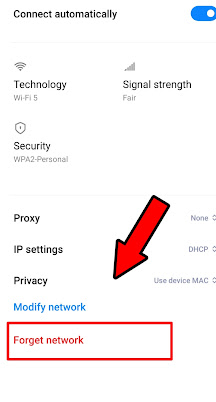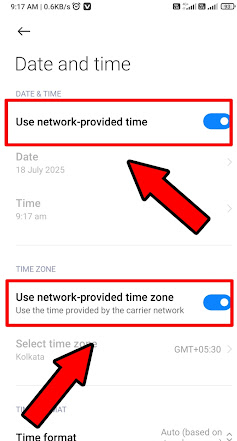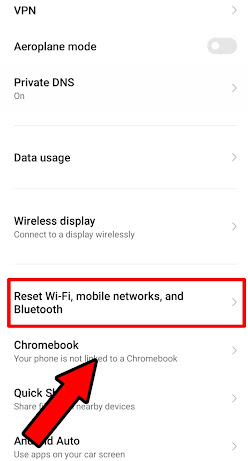Introduction
We live in a digital
world where WiFi is a lifeline. Whether you’re streaming YouTube, playing
games, working, or just browsing, having a stable internet connection is
essential. But what happens when your Android phone refuses to connect to WiFi?
Frustration kicks in—but don’t panic!
This step-by-step
guide is here to help you fix the issue. Whether it’s a simple network glitch
or a deeper software conflict, we’ll walk you through all the possible causes
and solutions. By the end of this post, your Android should be back
online—smooth and fast.
Common Reasons Your Android Won’t Connect to
WiFi
Before diving into the
solutions, it's helpful to understand why this issue occurs:
Incorrect WiFi
password or saved settings
Router issues or too
many connected devices
Software bugs or
outdated Android version
Battery saver or data
saver limiting WiFi
IP address conflict or
DHCP error
Malware or third-party
app interference
Each of these can be
resolved with the right fix. Let’s go step-by-step.
1. Restart Your Phone and WiFi Router
This is the most basic
step, but it often solves 90% of WiFi problems.
How to do it:
Turn off your Android
phone and wait 10 seconds
Turn off your WiFi
router for 30 seconds, then power it back on
Once the router lights
are stable, turn on your phone and try reconnecting
Why it works:
This clears any
temporary bugs, IP conflicts, or overloading in the router. It also refreshes
your phone’s network settings.
2. Toggle Airplane Mode
This resets all
wireless signals on your phone, including WiFi, Bluetooth, and mobile data.
Steps:
Swipe down from the
top to open Quick Settings
Tap the Airplane mode
icon to enable it
Wait for 10–15 seconds
Tap again to disable
it
3. Forget and Reconnect to the Network
If your WiFi was
changed (e.g., new password or router reset), your Android might have old login
info saved.
How to forget WiFi:
Open Settings >
Network & Internet > WiFi
Tap your WiFi network
Select Forget
Reconnect to it and
re-enter the password
Make sure the password
is correct and avoid any extra spaces or special characters.
4. Set Date and Time Automatically
An incorrect date/time
setting can block connections, especially on secured networks or apps like
Google Play and Gmail.
Fix it:
Go to Settings >
System > Date & Time
Enable Set time
automatically and Set time zone automatically
Restart your phone and
try again.
5. Restart in Safe Mode
Safe Mode disables all
third-party apps temporarily. This helps check if a new app is causing network
issues.
How to boot in Safe
Mode:
Press and hold the
Power button
Tap and hold Power Off
Select OK to reboot in
Safe Mode
Now try connecting to
WiFi. If it works, uninstall recently installed apps after rebooting back to
normal mode.
6. Reset Network Settings
This will clear all
saved WiFi, Bluetooth, and mobile data configurations and start fresh.
Steps:
Go to Settings >
System > Reset Options
Tap Reset Wi-Fi, Mobile
& Bluetooth
Confirm reset
After this, reconnect
to your WiFi and enter the password again.
7. Disable Battery Saver and Data Saver
Battery Saver and Data
Saver can restrict background services, including WiFi connections.
Turn them off:
Battery Saver: Settings
> Battery > Battery Saver > Turn Off
Data Saver: Settings
> Network > Data Saver > Turn Off
Also disable any
third-party battery management apps you’ve installed.
8. Switch to Static IP Address (Advanced)
Sometimes, DHCP
(automatic IP assignment) fails. Switching to a static IP can solve persistent
issues.
Steps:
1. Go to Settings >
WiFi
2. Tap the WiFi
network
3. Tap Advanced
options (or "IP settings")
4. Change IP settings
from DHCP to Static
5. Enter values like:
IP address:
192.168.1.101
Gateway: 192.168.1.1
DNS: 8.8.8.8 or
1.1.1.1
Make sure the IP
address doesn’t conflict with other devices.
9. Check Your Router Settings
Sometimes the issue
isn’t your phone—it’s the router.
Check for:
MAC address filtering:
Your device may be blocked
Too many connected
devices (exceeds router capacity)
Firmware updates for
your router
Correct WiFi band:
Some Androids don’t support 5GHz
Try resetting the
router to factory settings if other devices also can't connect.
10. Update Your Android Software
Bugs in older Android
versions can cause WiFi problems.
To check:
Go to Settings >
System > Software Update
If an update is
available, download and install it
Restart your phone
Many users fix their
issues simply by updating their device.
11. Factory Reset (Last Option)
If nothing works, you
may need a full reset. This will delete everything on your phone, so backup
your data first.
Steps:
Settings > System
> Reset > Erase All Data (Factory Reset)
After setup, try
connecting to WiFi before installing any apps.
Real-World Test Cases
Case 1: Samsung Galaxy
A14 not connecting to home WiFi
Cause: Corrupted saved
network
Fix: Forget and
reconnect + restart router
Case 2: Redmi Note 11
connects but no internet
Cause: Static IP
conflict
Fix: Set new static IP
and DNS (8.8.8.8)
Case 3: OnePlus Nord
stuck at “Connecting…”
Cause: Data Saver and
Battery Saver enabled
Fix: Disabled both +
network reset
Additional Tips
Ensure your WiFi
password is correct and updated
Try connecting your
phone to another WiFi (like mobile hotspot)
Check if Mobile Data
is interfering—turn it off temporarily
If you use VPN apps,
try disabling them while testing WiFi
Frequently Asked Questions (FAQ)
My phone connects but has “No Internet.” What
to do?
Restart router
Switch DNS to 8.8.8.8
Forget and reconnect
Check if internet
works on other devices
My Android connects to some networks but not
others?
Network might be using
unsupported WiFi frequency (e.g. 5GHz)
Router may block new
connections
Restart both router
and phone
Can viruses or apps block WiFi?
Yes, some malware or
aggressive apps can interfere with connections. Use Safe Mode or a malware
scanner to check.
Android phone not
connecting to WiFi
Fix WiFi problem
Android
WiFi not working
Android phone
Network reset Android
Android WiFi problem
solution
How to fix Android not
connecting to internet
WiFi issues Android
mobile
Conclusion
When your Android
phone won’t connect to WiFi, it can seem like a serious problem—but in most
cases, it’s a simple fix. Follow the steps above one-by-one, starting from a
simple restart to advanced fixes like static IP or resetting network settings.
If none of these work,
the problem might be hardware-related (like a broken WiFi antenna), and you
should consult a technician or service center.
Tags:
WiFi not working
Android, Android phone no WiFi fix, Android not connecting to internet,
WiFi issues in Samsung, Redmi WiFi problem, Android WiFi fix guide, WiFi
settings reset, Android WiFi troubleshooting























![[FIX] Phone Camera Black Screen Problem – 12 Easy Ways to Solve It](https://blogger.googleusercontent.com/img/b/R29vZ2xl/AVvXsEhMiuQAi89SE3-345dpSt14kSYaj-xF-YzDMOMyi2qfq39xkhA1LZulQSNXQXxKv2eslWYW6LLhAGBt50KWTjmQkRcZ_wuFqmGq3w6F0hW9xAbYn-tJbUxNq7uNl27YDz27VCVl9dYy7QQK0K6l-qQuUVTxQBONZUeWEp48pkyX5K-Q14SRloXAnrN2/w72-h72-p-k-no-nu/20250721_151355.jpg)

![Android System Webview: Should You Disable It or Not? [Expert Guide]](https://blogger.googleusercontent.com/img/b/R29vZ2xl/AVvXsEhrzJXlYA2vTLKJNzlBnvOZW4eEwGIF-2ex3NAtX593Y3VEG_dj0sRHkhgZ_O3IDYKECdurrs9UfymMIidEiBIPhdeBjkcoZlg0gbvcTk9PvY1FNcgniAaZBR7iE5tEiYkW7KDf0RP0k_8AuTswbHnpT0yglOuisdGbs6Iu6MEdAX5wcU8XasITjHvm/w72-h72-p-k-no-nu/1752122021838.jpg)

0 Comments